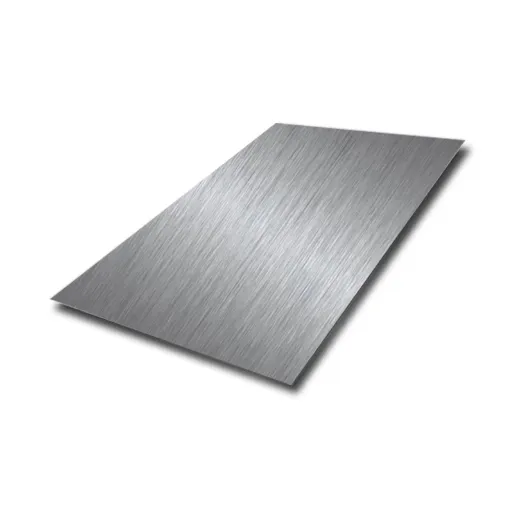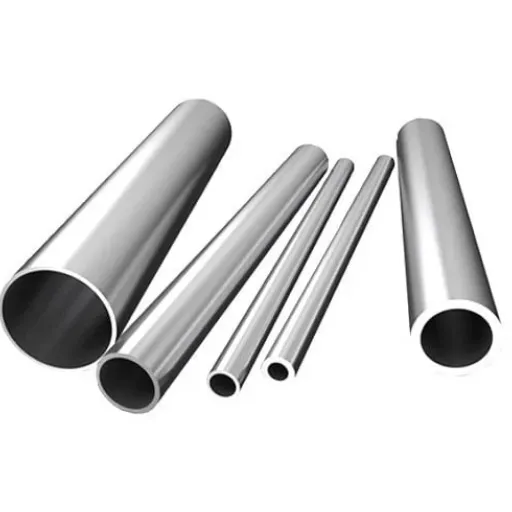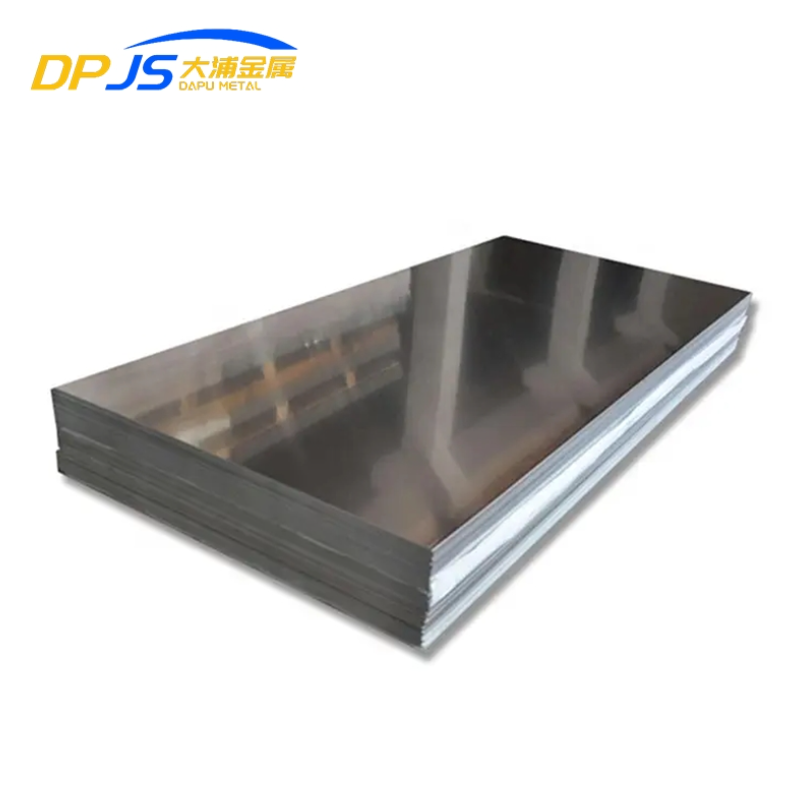The price of 316L stainless steel is a significant concern for manufacturers in the marine, chemical processing, and medical device industries. Considering that global supply chains are gradually stabilizing following the pandemic and nickel prices have been swinging, the current dynamics, as well as future trends in this respect, have now become critical for procurement and industrial buyers globally.
Product Overview
The 316L grade is a low carbon process industry standard content of stainless steel. Although in various forms, nickel and cadmium make a significant portion of the alloy, some present-day scientists prefer stainless steel as the symbol for alloyed steel.
Common Grades and Standards
- ASTM: A240/A240M (plate), A276 (bar), A312 (pipe)
- EN: 1.4404 (designation in Europe)
- JIS: SUS316L (Japanese standard)
- GB: 022Cr17Ni12Mo2 (Chinese standard)
Typical Chemical Composition
| Element | Weight Percentage (%) |
|---|---|
| Carbon (C) | ≤0.030 |
| Chromium (Cr) | 16.0–18.0 |
| Nickel (Ni) | 10.0–14.0 |
| Molybdenum (Mo) | 2.0–3.0 |
| Manganese (Mn) | ≤2.0 |
| Silicon (Si) | ≤1.0 |
| Phosphorus (P) | ≤0.045 |
| Sulfur (S) | ≤0.030 |
Key Mechanical Properties
- Tensile Strength: 590 MPa minimum (85 ksi minimum)
- Yield Strength: 217 MPa minimum (31 ksi minimum)
- Elongation: 30% minimum (in 50mm)
- Hardness: ≤225 HB (Brinell), ≤100 HRB (Rockwell B)
Commercial Sizes
- Plate: 5–150 mm thickness, up to 3200mm width
- Sheet/coil: 0.3–8 mm thickness, 1000–2000 mm width
- Bar: Ø6–300mm (round), 10–200mm (square/hex)
- Pipe/Tube: Ø6–1200mm (seamless/welded), Schedule 5–XXS
Primary Uses
- Marine environments: shipbuilding, offshore platforms, desalination plants
- Chemical processing: reactors, heat exchangers, storage tanks
- Pharmaceutical/food: processing equipment, sterile piping systems
- Medical devices: surgical instruments, implants, hospital equipment
- Architectural: coastal building facades, handrails, decorative elements
Global Price per Kilogram (Current Snapshot)
As of November 2025, prices of 316L stainless steel show huge regional variations with the US reaching a record-level weight at $5.37 per kilogram, ahead of China at $2.13/kg, Germany at $3.23/kg, Canada at $4.74/kg, and India at $2.57/kg according to IMARC in September 2025.
Current International Prices (November 2025)
FOB Main Export Hubs:
- Standard cold-rolled sheets (ex-factory): $3.50–$5.50/kg Gneestainless
- Polished/finished sheets: $5.50–$7.00/kg Gneestainless
- Bulk metric ton pricing: $2,800–$3,200 USD/MT (equivalent to $2.80–$3.20/kg)
Reputable Price Sources
- IMARC Group (September 2025): Range of regional spot prices from $2.13 to the record high of $5.37/kg
- Shanghai Metal Market (SMM) (June 2025): 316L/No. 1 coil at $2,869/MT ($2.87/kg) EXW Wuxi; VAT excluded Shanghai Metals Market
- Trading Economics/LME (14 November 2025): Nickel (a key input) at $14,880/MT—down 1.78% over the month TRADING ECONOMICS
CIF Premium to Major Imports
- Rotterdam (Europe): +$200–$350/MT (an 8–12% premium)
- Los Angeles (US West Coast): +$300-$500/MT (a 10–18% premium)
- Shanghai (China): Base pricing hub: minor premium
- Mumbai (India): +$100-$200/MT (a 5–8% premium)
Note: Price varies extensively depending on order quantity, surface finish (2B, BA, No. 1, No. 4), thickness, and value-added services.
Regional Sales & Pricing in Key Markets
| Country/Region | Typical Price Range (USD/kg) | Main Suppliers | Local Taxes/Duties | Popular Specs |
|---|---|---|---|---|
| United States | $4.50–$5.50 | Outokumpu, North American Stainless, ArcelorMittal | Import duties: 25% (Section 232), Sales tax varies by state | ASTM A240/A312, 2B finish, Schedule 10S pipe |
| China | $2.10–$2.90 | TISCO, ZPSS, Eastern Special Steel, Xinjinhui | 13% VAT, Export rebate 13% | GB 022Cr17Ni12Mo2, No.1 finish, BA for high-end |
| Germany/EU | $3.00–$3.50 | Outokumpu, Acerinox, ThyssenKrupp | 19–25% VAT, CBAM (Carbon Border Adjustment) from 2026 | EN 1.4404, 2B/BA finish, seamless tube |
| India | $2.50–$3.00 | Jindal Stainless, SAIL, Viraj Profiles | 18% GST, Import duty 7.5% | IS 1.4404, 2B finish, welded pipe |
| Canada | $4.20–$4.80 | Imports from USA/Europe, Limited domestic | 5% GST + Provincial taxes, CUSMA preferential rates | ASTM standards, No.1/2B finish |
| Japan/South Korea | $3.50–$4.20 | Nippon Steel, POSCO, Hyundai Steel | 10% consumption tax (Japan), 10% VAT (Korea) | JIS SUS316L, BA/HL finish, precision tube |
Regional Insights:
- The U. S. market witnesses a growing demand from aerospace and medical segment, making it the major cost driver, while characterised by nickel/molybdenum inflation and import tariffs; this is indicated by what IMARC has reported.
- China’s competitive prices come mainly from low labor costs and the domestic nickel supply chain; compliance with environmental regulations tends to create revenue pressures for the industry, as shown by the case study by IMARC.
- Germany stands strong despite growing energy costs, benefiting from demand in machinery and medical equipment, reads IMARC.
- Stainless steel demand remained crippled by continued challenges, as Global Outlook for SS Sector does not hint at recovery in Q4 2025 AG Metal Miner.
Historical Price Volatility (Past 24 Months)
Monthly Average Price Trend (November 2023 – November 2025)
USD/kg
6.0 | ●
5.5 | ● ● | ●
5.0 | ● |
4.5 | |
4.0 | ● |
3.5 | ● ● |
3.0 | ● ● ● ● |
2.5 | ● ●
+------------------------------------------
N D J F M A M J J A S O N D J F M A M J J A S O N
'23 '24 '25Key Stats:
- High: $5.90/kg (March 2024) – post-energy crisis peak
- Low: $2.45/kg (Nov 2025) – present softening trend
- Overall change: from peak to present levels, -58.5%
- Volatility: ±25-35% quarterly swings
Major Price-Moving Events (2023–2025)
Q4 2023: Stabilization of the base ($2.80-3.20/kg)
- Supply chain normalizing post-pandemic
- China’s construction demand moderate
Q1 2024: Energy crisis upside spikes ($4.50–5.90/kg, +85%) with
- European energy price hikes pushing up production costs IMARC.
- The LME’s nickel prices hit multi-year highs in early 2024 TRADING ECONOMICS
Q2-Q3 2024: Correction (downward) movement ($3.50–4.20/kg, -30%)
- China’s oversupply was putting pressures on global establishments
- Construction sector demand is softening
Q4 2024-Q1 2025: Nickel weakness phase ($2.80–3.20/kg, -25%)
- Nickel hit four-year lows nearing $15,055/ton by January 2025 when the Indonesian contribution was augmented MINING. COM
- Battery-grade nickel oversupply spillover
Q3 2025: The current slump ($2.45–2.90/kg, -15%)
- Weak demand continues in the face of global manufacturing and construction depression AG Metal Miner
- Nickel prices fell by 3.98% from a year ago to $14,880/MT as of November 14, 2025 TRADING ECONOMICS
Short-Term & Long-Term Price Trends
Next 3–6 Months Forecast (Q4 2025 – Q1 2026): NEUTRAL TO BEARISH
Projected Range: $2.40–3.10/kg
Key Drivers:
- Oversupply concerns: The OECD analysis indicates that by 2027 global steel capacity excess will mushroom by 165 million tonnes, pushing overcapacity beyond 700 million tonnes Steelonthenet.
- Weak demand: PMI shrank for manufacturing in main economies; Q4 seasonal slowdown
- Nickel stability: Indonesian production stabilizing near current levels
- Trade policy: The ongoing Section 232 tariffs on steel will hold up US prices but push down global arbitrage
Industry Outlook: According to Market Outlook consultants, steel prices are forecast to continue falling until Q1-Q2 2025, when they are likeliest to hit rock bottom-roughly mid-2025 Steelonthenet. The premium placement of 316L relative to commodity grades may, however, help soften the declines.
2026–2028 Medium-Term Outlook: gradual recovery
Projected Outlooks by 2028: $3.50–4.50/kg (Asia), $5.00–6.50/kg (USA/Europe)
Structural Factors:
1.Green steel transition (2026+)
- Implementation of EU Carbon Border Adjustment Mechanism (CBAM) in 2026+ would accelerate the price recovery in Europe Steednlononnet
- Low-carbon stainless steel produced again at a surcharge of 10-20%
2. Infrastructure spending
- Worldwide infrastructure investment estimated at $94 trillion until 2040 would drive continuous demand for stainless steel, per Expert Market Research
- For water treatment and desalination projects, 316L is favored
3. EV and renewable
- The corrosion-resistant grades required for Asia steel are the grades for batteries and the housing of hydrogen fuel cells.
4. Recycling expansion
- As the recovery rate increases and upcoming generation capacities in Southeast Asia have a high effect on recycling, long-term prices will mature somewhat Accio
Analyst Consensus:
- World Steel Association: Forecasts 2–3% annual stainless steel demand growth through 2028
- CRU Group: Anticipates a firm nickel price period between 2027-2030
- Fastmarkets: Forecasts nickel prices ending their bearish run in 2024, remaining stable at $13,000 to FREE/MT spiral 2027 with an appreciation for 316L prices
Buying Tips & Risk Hedging Strategies
Procurement Best Practices
Order Quantities:
- Asian Suppliers: 1 – 25 tons (lower quantities available on a premium price)
- European/US Mills: 5 – 50 tons
- Special finishes: Often call for 10+ ton commitments
Lead Times (2025 Market):
- Standard specifications/delivery times: 4 – 8 weeks (Asia), 6 – 12 weeks (USA/Europe)
- Special specifications: 10 – 16 weeks
- Emergency Orders: +20-40 %, in shape of surcharge, 2–4 weeks
Terms of Payment:
- Standard: 30% deposit, 70% before dispatch (T/T)
- Established Buyers: Letter of Credit (L/C) at sight or 30 – 90 days
- Long-term contracts: Quarterly accounts reviewing mechanism with LME nickel index as a reference point
Price Lock-in and Hedge
1.Forward (3-12 Months)
- Quiet agreements with mills to fix the prevailing rate; usually upheld to buy 100-500 tons
- It is a best match for price expectations; entrance costs can also be minimal
2. LME Nickel Futures Hedge
- Observing LME nickel’s 3-month contracts in the current price range at about $15,000 per ton. (via Trading Economics)
- Hedge 40-60% of the nickel amount traded in; 316L constitutes about 11% nickel
- This would include opening a futures trading account; applicable for trade between $500K annually
3. Supplier Price Protection Agreement (PPA)
- Discuss and set the upper ceiling price quarterly with key suppliers
- Normally, they term it as the spot price + an 8% maximum quarterly escalation
4. Strategic Supply Management
- Provide an on-hand inventory of 2-3 months for the lean times
- Current scenario (Q4 2025) leans somewhat toward brief inventory-building opportunities
Quality Assurance & Red Flags
Essential Documents:
- Mill test certificate (MTC 3.1/3.2): Chemical Composition and mechanical properties
- Third-party inspection: SGS, Bureau Veritas for large orders
- PMI (Positive Material Identification): Verify grade authenticity on-site
Red Flags for Counterfeit/Low-Quality Materials:
- Pricing (>30% discount) lower than the market average without clear justification
- Missing or generic mill certificates (demand original MTCs with unique serial numbers)
- Reluctance to provide samples for independent testing
- Grade confusion: Verify 316L vs 316 (carbon content difference critical for welding)
- Surface defects: Excessive pitting, irregular finish, inconsistent color
- Weak magnetism: True 316L should be essentially non-magnetic; magnetic response indicates ferritic contamination
Recommended Due Diligence of Suppliers:
- Verification in ISO 9001 and industry-specific certifications (PED for pressure equipment, FDA for food-grade).
- Incorporate the use of buyer referrals from the same field of activity
- Asks for a plant visit for a purchase above $100K
- Watch out for supplier transaction history in a site like Alibaba (positive signs include retaining orders)
Conclusion
In late 2025, the 316L stainless steel price environment tips in favor of buyers with multi-year lows touching on high due to nickel dwindling and global overcapacity. Sourcing executives must currently harvest any benefits brought forth by this favorable market while also making arrangements to endure price recovery over the preparation period post-2026, which is expected to get juiced up soon thanks to increasing green steel initiatives and infrastructure expenditures.
Key Takeaways:
- Present pricing hovers in the range of $2.45-5.50/kg across regions, with Asia indulging in numerous 40-50% discounts from American levels.
- Another softer near-term seems on the horizon for now, as strategic buyers should call some 6- to 12 month contracts while there’s still some room left.
- Historical returns, including poor underperforming performance in terms of value ratios, suggest a low carat for moderate, plausible capital appreciation
- LME hedges pass a 15-25% stability on a fair price in cost due to exposure tradable for the physical market.
By using market information in proportions with impressive quality monitoring and timely strategic hedging, end-users can endure volatility and receive the intended delivery of quality corrosion-resistant goods.
Sources:
- IMARC Group: Stainless Steel (316) Price Trend (September 2025)
- Shanghai Metal Market (SMM) -Price of 316L Wuxi spot (June 2025)
- Trading Economics- LME Nickel Prices (November 2025)
- Steel-On-Net -Steel Industry Statistics (February 2025)
- MetalMiner -Stainless MMI Report(November 2025)
- Expert Market Research -Stainless Steel Price Forecast
- World Stainless Steel Prices -MEPS International
Disclaimer: Prices and forecasts in this article reflect data available as of November 5, 2025, and are subject to change without notice. This analysis is for informational purposes and does not constitute financial, legal, or commercial advice. Always verify current spot prices and contractual terms directly with suppliers and industry pricing services.






